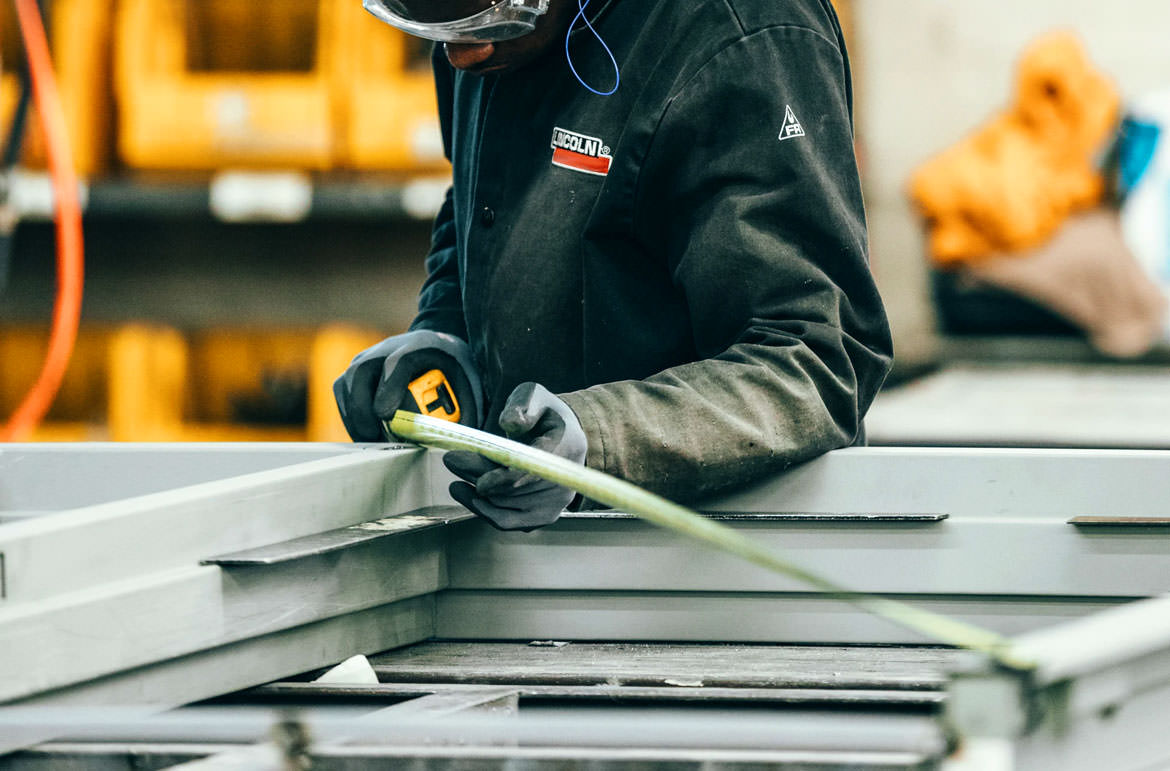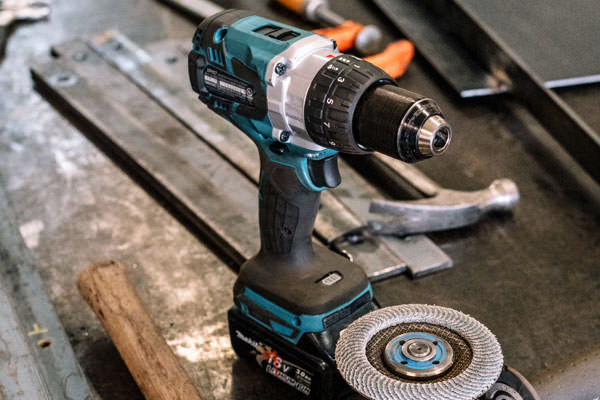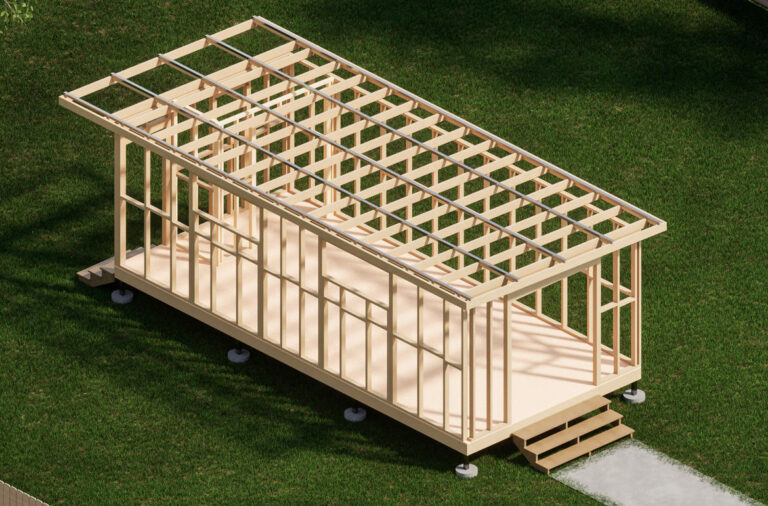
One type of granny flat that you may be considering is a prefabricated granny flat. But what is a prefabricated granny flat exactly?
- You will choose from an existing design and won’t be able to make many modifications.
- They are made off-site, in a factory, on a production line.
- Building, takes, on average, 10+ days, though this depends on the layout of your granny flat
- Building starts with the steel frame being welded together (in most cases)
- The final step involves putting all the pieces together – window coverings, flooring, etc.
In this post we will discuss the detailed stages of building a prefabricated granny flat.
I will explain how to transport a prefabricated granny flat. Plus some major points that people miss out on.
DON'T PAY A FORTUNE FOR YOUR GRANNY FLAT. Find out how to deal with council and build a granny flat for the lowest cost possible. Learn More.
Stages of Building a Pre-Fab Granny Flat
Most prefabricated granny flat builders follow a similar process:
- Choose your design – This will involve visiting their showroom and choosing from an existing design. You may be able to select inclusions, upgrades, and paint colour. Changes (i.e. customisations/modifications) are more difficult to make to the pre-existing designs. This is due to the nature of how the production line is set up for most factories.
- Receive your quote
- Site visit – Only some pre-fab builders will send out a Project Manager for a site visit. If so, they will also assist you with your Council application.
- Building begins – It takes, on average, 10+ days to build a pre-fab.
However, this will depend on how many the company already has scheduled in their system, and the internal layout of your granny flat. So, they can take 1 – 3 weeks to be fully constructed. Building takes place at a factory. Many companies will let you visit their factory, which runs like a production line, such as the one below:

Prefabricated Granny Flats by Richard Rogers – Source
Building starts with welding the steel frame or nailing a timber frame together. It finishes with putting all the pieces together – inserting your window coverings, flooring, cupboards, benchtop, cooktop, sink, toilet, shower, washing machine, etc.
- Delivery – Delivery time also depends on how many pre-fabs the company is currently building/delivering, and also when your land has been approved by your Council. Only once Council approval has been received will your pre-fab be scheduled for delivery.
Delivery requires a special truck and a crane – you can view a video of a granny flat being craned into a property at Fox Granny Flats.
- Move In – You now have an approved and fully constructed granny flat on your property – all that’s left to do is move in!
How Do You Transport a Prefabricated Granny Flat
A lot of preparation is required before a prefabricated granny flat can be delivered to your property. As mentioned, certification must be gained before you can organise delivery.
I suggest contacting your Council and asking for their requirements on the approval process. Once approval has been granted, you must plot the route it will travel for delivery – as this too must be approved by council.
As the pre-fab is being carried by an oversized vehicle, you must consider the below:
-
Every street you plan to travel.
-
Any possible obstructions such as trees, low powerlines, or bridges.
-
If the roads are hazardous or busy, and if so, whether traffic control should be arranged.
Once you have planned your journey, pass it on to the movers. Ensure to do this days prior to your trip, or you may be charged extra fees. Something else important to note is the size of your granny flat will decide whether a crane is required on your site to help the transport vehicle unload it.
Many prefabricated granny flats are just moved onto temporary draw bars with wheels, and then, guided by workers, winched onto the transport vehicle. But, at times, a crane will be required at your property – particularly if site access is not easy.
In these cases, a large crane will be needed, as unloading will be done from further away. For more information, such as the approval required by Council, the cost of transport and cranes, and common problems of transportation, see my article about transporting a granny flat.
Is a Prefab Worth Less?
Any granny flat can be a good investment, if done ‘right’.
A typical granny flat will cost $100 000 – $140 000+, depending on where you live, and take 3 – 4 months to finish building.
A pre-fab is a good budget option, as you can see in these articles:
But as common saying goes – you might get what you pay for. Questions that are important to ask yourself are;
- How solid and well-built are they?
- Will they stand the test of time?
I will elaborate on why this is so important under “Pro’s and Cons of a Prefab Granny Flat” below.
Prefabricated Granny Flat Builders in Each State
NSW
- UniPlan – (02) 9773 8567 or 1800 864 752
- BuiltSmart Group – 1800 223 435
- BetterLook Homes – (02) 6921 3133 or 0448 835 625
- CedarSpan Cabins – 1300 635 966
- OSM Transportables – (02) 6881 6883 or 1417 765 756
QLD
- East Coast Homes & Parks Cabins – (07) 5598 1558
- Frame Steel Granny Flats – (07) 3287 5478
- Superior Granny Flats – 0419 540 393
- Arkistruct – 1300 121 653
SA
- Allsteel Transportable Homes – (08) 8282 7373
- Olympic Industries – (08) 8349 5744
VIC
- Superior Granny Flats – (03) 9738 2279
- Garden Studios – (03) 9555 1132 or 0403 553 976
- Harwyn – 1300 427 996
WA
- Fox Granny Flats – (08) 6001 6952
- SipForm – 1800 747 700
- Straight Edge – 0416 167 553
- Cavalier – (08) 9459 6000
- Factory Direct WA – (08) 9417 7355
TAS
- PodMatrix – (03) 6448 4560
- Tas Kustom Cabins – 0447 589 329
Labour Required to Put Together a Prefabricated Granny Flat
As with all granny flats, some extra labour will be required to ‘finish’ your pre-fab. It’s important to prepare your land before it arrives. Whilst your granny flat is being manufactured off-site, you can start this on site. By overlapping both, you will speed up the overall process.
So, after choosing your pre-fab, prepare your foundation.
You will also need to spend some money on labour for an electrician and plumber, to connect utilities such as power and water. This means when your granny flat is delivered, it can be set-up straight away.
There are other roles, such as landscaping, that you will be able to perform yourself.
Pro’s and Cons of a Prefab Granny Flat
A prefabricated granny flat has both advantages and disadvantages. A lot depends on what you want from your granny flat.
Let’s say that you want the granny flat designed specifically to where you live. Making the most of your land, trees, sun, etc. That is, you want your windows orientated a certain way, because, for example:
- You want to use the granny flat as an AirBnB and rent it out.
Then, a pre-fab is not going to be your best choice, as it’s not designed for your site – it is made off-site and then delivered to you. You can view architecturally designed granny flats to see the difference between a pre-fab and something designed specifically for your land.
Another disadvantage of a pre-fab is that, though they are made to Australian standards, they are not necessarily made to best practice. These are two different things.
With a pre-fab, you can’t inspect what’s happening when your granny flat is being built – you can’t go into your backyard to see “Hey what did they do today?” Rather, you just hope when it turns up via a crane in a few months, it’s in the condition you were told it would be.
Unfortunately, this isn’t always the case, simply because it passed Australian standards but wasn’t made to best practice. So the work can be poor-quality – there were no job specifics dictating to what level the work should have been performed.

With the right process, your granny flat can be made quickly.
For example, a plumber should use a 10mm pipe, however they use a 15mm cutting disk, which lets vermins in between the pipes for instance. This will pass Australian standards, but isn’t good quality workmanship, and so isn’t best practice.
A builder will generally have someone observing their techniques. They will gain best practice from having the knowledge and experience for specifying things such as:
- Specific tools they will use for building
- Specific materials they will use
- What insulation is being used in the walls and roof
Keeping and eye on the construction and being part of it is a bit harder to do with a pre-fab.
However, that doesn’t take away from the main benefit of a prefabricated granny flat.
They are designed off-site (out of the weather) and delivered quickly.
So, they can be a great investment property if you have the land and want to rent it out straight away.
Conclusion
A prefabricated granny flat is made off-site, in a factory. When choosing the style you want (from an existing design), you may be able to select inclusions, upgrades and your colour of paint. Modifications will be more difficult.
This is they are made on a production line, on average in roughly 11 days.
As building is done so quickly:
- Starting with the frame being put together, and
- Finishing with all the pieces (i.e. window coverings, flooring and your inclusions) installed
This might mean a pre-fab is of a lesser quality than a typical construction.
Whilst they are built to Australian standards, they may not be built to best practice. So, though the final product is typically what clients are interested in and happy about, remember to question what you want from your granny flat.
If you’re looking for a cheaper alternative to use as an investment to rent it out immediately, a pre-fab may be ideal for you.
However, if you want a sustainable build, something that will last 10, 20 or even 50 years, a high-quality granny flat designed by a professional may be worth looking into.











